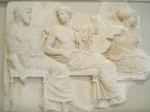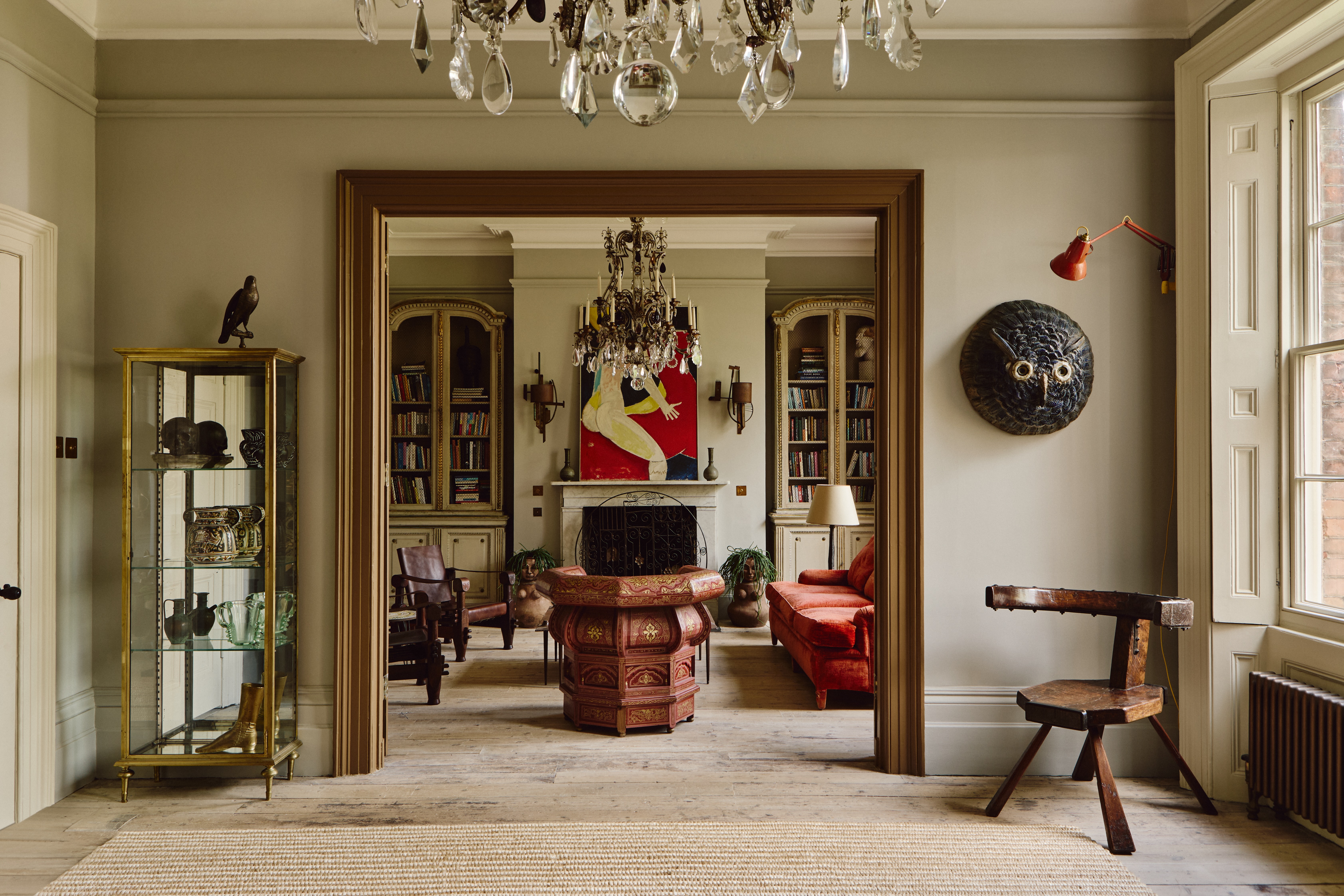Take a piece of the Parthenon home
Christie's is selling more than 350 items from James Perkins' collection at Aynhoe Park, including a piece from the Parthenon in Athens


Eclectic artefacts amassed on ‘a modern grand tour' will be sold at Christie's South Kensington on October 9, when James Perkins, owner of Aynhoe Park, sells more than 350 items to make room for more pieces in his constantly evolving collection. There's everything from an armadillo-shell helmet (estimated at £600-£900) to a stuffed walrus head, plus furniture and photography, but pride of sale is the magnificent Classical plaster sculpture.
* Subscribe to Country Life and get our
Ipad edition for free
Mr Perkins's fascination with sculpture began when he was 15 and saw a newly cast bust of Apollo being drawn from its mould in a restorer's workshop in Cheltenham. He saved up his pocket money, and the bust became the first piece in his collection, which includes 12 sections from the Parthenon frieze, attributed to Brucciani & Co (£6,000-£9,000). Viewing days are at Aynhoe Park, Aynho, Oxfordshire, on October 5-8 (www.christies.com).
* Follow Country Life Magazine on Twitter
Sign up for the Country Life Newsletter
Exquisite houses, the beauty of Nature, and how to get the most from your life, straight to your inbox.
Country Life is unlike any other magazine: the only glossy weekly on the newsstand and the only magazine that has been guest-edited by HRH The King not once, but twice. It is a celebration of modern rural life and all its diverse joys and pleasures — that was first published in Queen Victoria's Diamond Jubilee year. Our eclectic mixture of witty and informative content — from the most up-to-date property news and commentary and a coveted glimpse inside some of the UK's best houses and gardens, to gardening, the arts and interior design, written by experts in their field — still cannot be found in print or online, anywhere else.
-
 ‘It had the air of an ex-rental, and that’s putting it politely’: How an antique dealer transformed a run-down Georgian house in Chatham Dockyards
‘It had the air of an ex-rental, and that’s putting it politely’: How an antique dealer transformed a run-down Georgian house in Chatham DockyardsAn antique dealer with an eye for colour has rescued an 18th-century house from years of neglect with the help of the team at Mylands.
By Arabella Youens
-
 A home cinema, tasteful interiors and 65 acres of private parkland hidden in an unassuming lodge in Kent
A home cinema, tasteful interiors and 65 acres of private parkland hidden in an unassuming lodge in KentNorth Lodge near Tonbridge may seem relatively simple, but there is a lot more than what meets the eye.
By James Fisher